Construction of key football cities: a football strategic project spanning 60 years
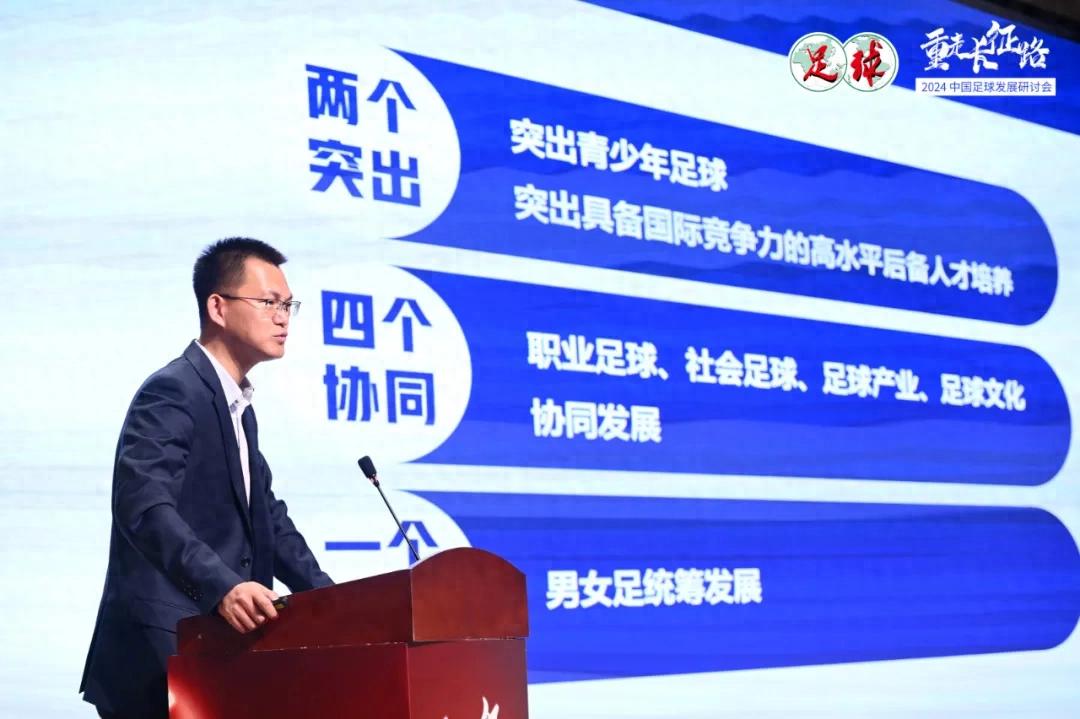
The reporter reported coldly At the "Re-taking the Long March Road - China Football Development Seminar", the construction of key cities for national football development is an important topic for discussion. Cheng Xu, head of the Youth Department of the Chinese Football Association (National Football Development Key Cities Office), and heads of sports administrative departments in key cities of national football development attended the meeting. Among the six major measures proposed by Song Kai, chairman of the Chinese Football Association, at the meeting, all the key cities for football development are covered: the first is to mobilize local enthusiasm, consolidate the foundation of youth football from the aspects of technology first, practical training, grasping young people and promoting the integration of sports and education, and then build a pyramid of the competition system with key cities for football development. It can be said that the key cities of football development play an important role in promoting the overall improvement of China's football level.
It is a strategic project to implement the requirements of the "Overall Plan for the Reform and Development of Chinese Football" in the new era, accelerate the revitalization of football, and promote the construction of a sports power, and it is a major measure to comprehensively deepen football reform and explore the development path of football with Chinese characteristics during the "14th Five-Year Plan" period. The construction of key cities for football development is crucial to the development of Chinese football in the future, and undertakes the main functions of consolidating the population base of youth football, establishing and improving the competition system, breaking down the barriers of youth teams in different systems, and forming an upward channel for the transportation of young talents.
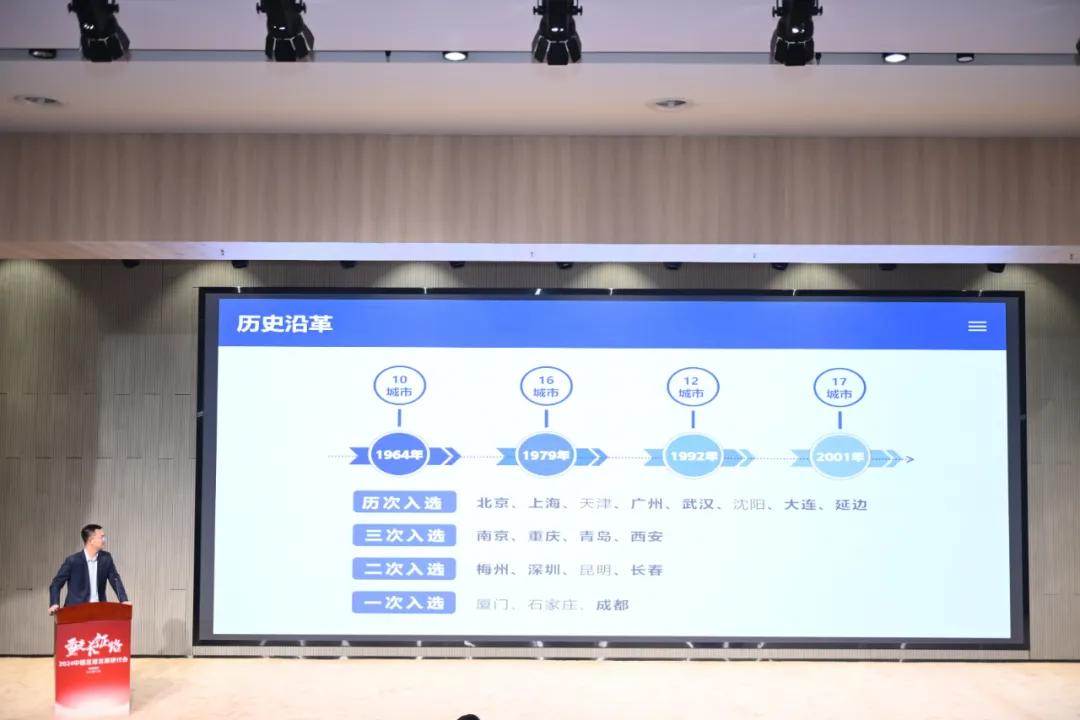

The strategy of building a key city for football development began 60 years ago in 1964. At the National Football Work Conference at that time, the State Sports Commission issued the "Decision on Vigorously Carrying Out Football and Rapidly Improving the Technical Level" according to the instructions and suggestions of Marshal He Long, then director of the Sports Commission, and for the first time determined Beijing, Shanghai, Tianjin, Guangzhou, Wuhan, Luda, Shenyang, Nanjing, Yanbian, Meixian 10 key areas for the development of football in the country, which is the starting point of the strategic project of building key cities for football development.
Later, in 1979, 1992 and 2001, the setting of national football development cities changed three times, until 2021, when the General Administration of Sports of the People's Republic of China issued the "Guiding Opinions of the General Administration of Sports on Carrying out the Construction of Key Cities for National Football Development", established the National Football Development Key Cities Work Leading Group, and issued the "National Football Development Key Cities Selection Measures", and after three selections, the current 16 national football development key cities were determined from the 44 declared cities: Shanghai, Chengdu and Wuhan, Shenzhen, Changchun, Chongqing, Dalian, Qingdao, Guangzhou, Beijing, Yanbian, Suzhou, Hangzhou, Meizhou, Xi'an and Nanjing.
With a good football foundation, good development conditions and high work enthusiasm as the main selection criteria, the strategic project of building a key city for football development is a strategic project built on the rapid development of China's urbanization, relying on large cities and regions with strong economic strength, huge population base and long football tradition, giving full play to the natural advantages of the central city's economy, educational resources and football facilities, and driving the key cities and surrounding areas for football development from point to area, promoting the steady growth of football population, and the rapid development of youth football and sports and education integration on a high basis. Through the short-term, medium-term and long-term goals, we will highlight the cultivation of youth football and high-level reserve talents, promote the coordinated development of professional football, social football, football industry and football culture, and also take into account the overall development of men's and women's football.
The strategy of key cities for football development in the new era is to fully draw on the successful experience of football development in developed areas of Europe, America, Japan and South Korea, combined with China's specific national conditions and the development status of the football industry, and make strategic decisions on football development, especially the symposium on key cities for national football development presided over by State Councilor Chen Yiqin in Shanghai on May 31, which further accelerated the construction of key cities for football development, and the construction of key cities for national football development has entered a new stage.


The strategic project of building a key city for national football development is based on the advantages of economic, population, software and hardware resources and the enrichment of football traditional culture in the development of the football industry, making full use of resources to promote the balanced development of the seven regions of the country, allowing key cities to play a key role in support, demonstration and innovation, and taking on the mission of football development highland, regional benchmark and reform pioneer, so as to provide strong support for the revitalization of Chinese football and the construction of a sports power.
The 16 key cities for football development have a strong economic foundation, with a total GDP value of more than 3.13 billion yuan in 2023, accounting for 26.7% of the national GDP; The total population is 231 million, accounting for 16.4% of the country's total population and 24.8% of the country's urban population. In 2023, the top 10 cities in the country in terms of total GDP will all be selected, with four cities in the most economically developed Yangtze River Delta region including Shanghai, Suzhou, Hangzhou and Nanjing, three cities in the Pearl River Delta and Guangdong, three cities in Guangzhou, Shenzhen and Meizhou in the Pearl River Delta and Guangdong, three cities in Beijing, Dalian and Qingdao in the North China Economic Circle, and two cities in Chengdu and Chongqing in the emerging Chengdu-Chongqing metropolitan area. A good economic foundation and population base are two very important prerequisites for the development of football.
Each of the seven regions has key cities for football development, taking into account the balance of regional development. Northeast China (Changchun, Yanbian, Dalian), North China (Beijing), East China (Qingdao, Shanghai, Suzhou, Hangzhou, Nanjing), Central China (Wuhan), South China (Guangzhou, Shenzhen, Meizhou), Southwest (Chengdu, Chongqing) and Northwest (Xi'an) will make the construction of key football development cities have a strategic height of a game of chess in the country, and the developed coastal areas and central cities in the mainland will develop in a coordinated manner.
These 16 key cities for football development account for only 3% of the country's total area, have 1/6 of the country's population, and contribute 1/4 of GDP. In the 2024 season, 16 key cities have a total of 24 professional clubs in the Chinese Super League, China League A and China League B, accounting for 46% of the total (52). With the current situation, this number will increase to 31 next year (including 3 clubs participating in the second league), accounting for 55.4% of the total (56). In addition, in the 2024 Women's Super League and Women's League A, there are also 10 clubs in key cities, accounting for 41.7% of the total total.
In the field of high-end technical talents in national football, among the national coaches above the A and B level, the key cities of football account for more than 40%. The number of professional coaches, 16 key football cities account for more than 50% of the country. The trend of the country's elite football talents to further gather and move closer to 16 key football cities is also prominent. The influence of key cities in football development on professional football continues to rise significantly.
The economic, demographic and cultural advantages of the 16 key cities for football development have basically ensured a solid foundation as the "base point" for the revitalization of Chinese football. With such a "base point" with outstanding advantages, we can give full play to the role of "leading from point to area", so that the future development of Chinese football can get a strong driving effect from key cities.
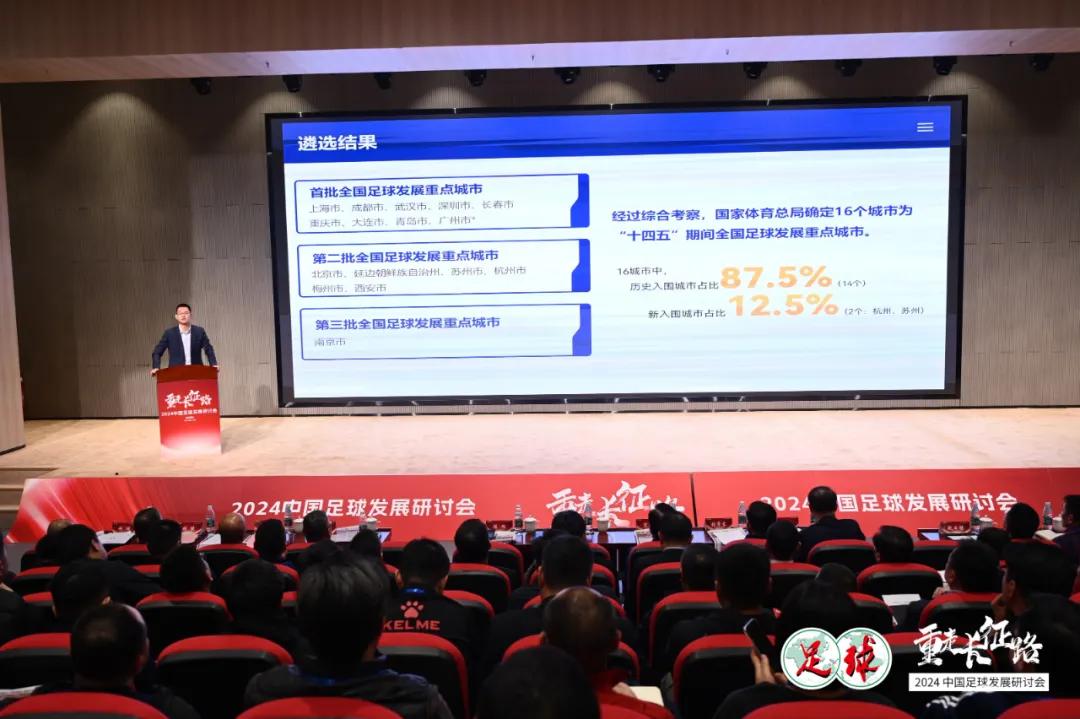

The core content of building a key city for national football development is "two highlights": highlighting youth football and highlighting the cultivation of high-level reserve talents.
In 2021, the Youth Department of the Chinese Football Association (National Office of Key Cities for Football Development) formulated a total of 91 indicators in 9 fields to evaluate key cities for football development, which will increase to 10 fields in 2024, of which the weight of youth football will increase from 35% to 39%, which is the top priority. Make full use of the huge advantages of football facilities, football coach talent resources and educational resources in key cities, and establish a direct guarantee system for urban youth football talents to go to school at the popularization level, as a necessary condition for key cities, that is, the "631" system, that is, within the first year of construction of key cities, at least 4 municipal districts and counties, build a number of local kindergartens→ 6 or more primary schools→ 3 or more junior high schools→ 1 so to go to high school and university football talent education guarantee system, to achieve from the age of 4, A football talent training mechanism covering a total of 6 age groups after the age of 19.
The "631" system is in line with the national conditions of China's youth education system, cultivating football talents, and at the same time relieving young players of their worries about obtaining high-quality education as much as possible, so that they can focus on football practice and improve their personal skills. The full integration of sports and education and campus football are the foundation for the development of youth football in key cities. The "631" system is a channel to open up the guarantee for football talents to go on to higher education on this basis, which can encourage more parents to be willing to let their children invest more energy in football, and will not lead to the "cliff" phenomenon of youth football development due to focusing on academics. By the end of 2021, the number of young players in 16 key cities reached 27,000, including 20,900 male players and 6,100 female players, and these two numbers continue to rise this year.
On top of the grassroots campus football and the "631" system, there is also the "61 system", that is, each city should establish at least 6 district-level youth training centers and 1 municipal-level youth training center during the "14th Five-Year Plan" cycle, so as to realize the selection and promotion of football talents from the grassroots level to the district and county level and then to the city level, and do a good job in the cultivation of talents. There are also higher youth training centers at the provincial and regional levels, which serve as a transit station for sending talents to the national youth team. At present, there are at least 19 national youth training centers in 16 key cities for football development, accounting for 56% of the national youth training centers in the country. In accordance with the AFC's elite youth training plan, the regional youth training center has been fine-tuned and improved according to China's national conditions, and at least five regional youth training centers will be fully built next year.
The Suzhou regional-level reserve talent base, which has been put into use, has begun to select the 2011 national brand youth players. At the same time, the key cities for football development should also have high-level European clubs with stable cooperative relations, which can allow young players to try out and train in the echelon of the opposing club. It is not enough to rely on the complete youth football training system in key cities in China, so that more potential football talents can rely on the cooperative relationship between key cities and top European clubs to go out and achieve overseas exchanges, which is another important direction of the youth football training system in key cities.
The construction of key cities for football development is based on the integration of campus football, sports and education, coupled with a clear pyramid youth talent training system, which is the institutional guarantee for key cities to cultivate a youth football population that grows in both quantity and quality. It is necessary to achieve the talent training system in key cities "longitude is straight, and the upgrade is direct; The latitude is widened, parallel connection", the upward passage is clear, and the downward guarantee is strong.
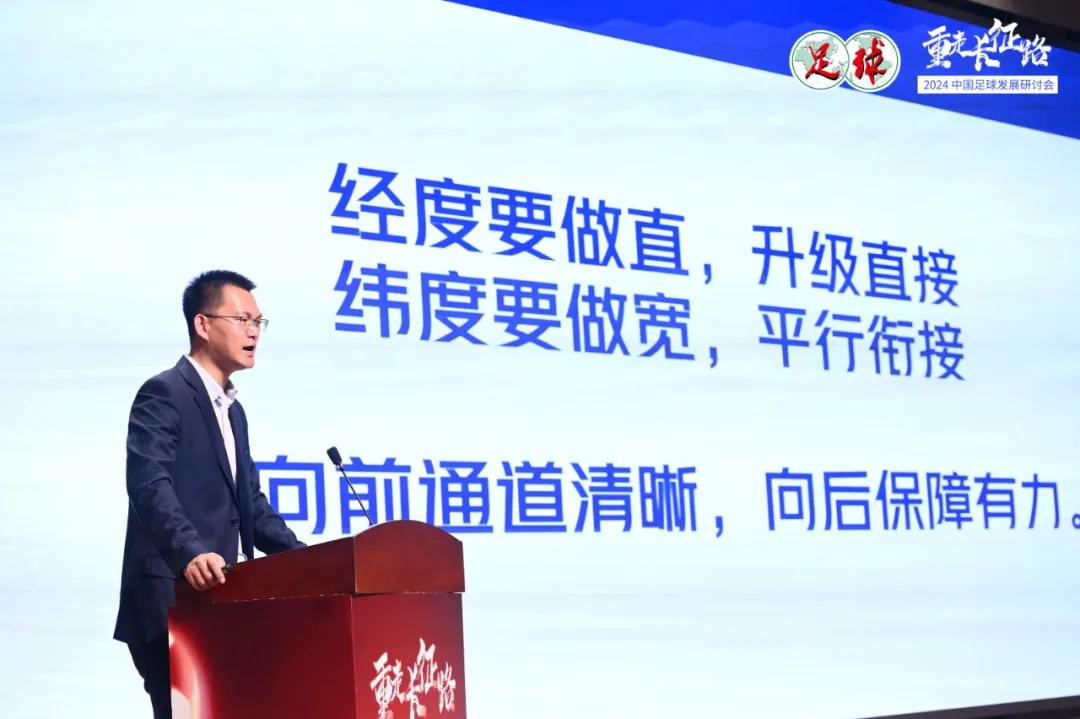

The most fundamental and direct mechanism for the cultivation and selection of a large number of youth football talents in key cities for football development is competition. Establishing and improving a complete pyramid structure competition system from communities, districts and counties, municipal, provincial to regional is one of the core projects for the construction of key cities for football development. In the second half of 2024, the Youth Department of the Chinese Football Association (National Office of Key Cities for Football Development) has divided the country into six regions, and the internal competition materials and coach training will be carried out on a regional basis.
These six regions are slightly different from the traditional administrative regions, and have been fine-tuned according to the current status of domestic football development: the three eastern provinces are the North 1 District, the five provinces and cities of Beijing, Tianjin, Hebei, Lujin and Jinjin in North China are the North 2 District, and the five northwest provinces and regions and Inner Mongolia are the North 3 regions; Jiangsu, Anhui, Henan, Hubei, Zhejiang, and Shanghai are the South 1 Zone, Hunan, Jiangxi, Fujian, Guangdong, Guiqiong are the South 2 Zone, and the five southwestern provinces and regions are the South 3 Zone. The core competition is the China Youth Football League, which consists of provincial and municipal qualifiers and national finals, and is divided into men's (U13, U15, U17, U19) and women's (U14, U16, U18) age groups. This national event has the widest coverage and the largest number of participants, and can be participated in by campuses, sports schools, social youth training institutions and amateur club formation teams in all districts.
Another important event is the Chinese Football Association Youth Championship, which sets up competitions for all ages in the key city group, professional club group and member association group. The key city group has a minimum age (U10-U15 in total 6 levels), which is divided into city qualifiers, regional competitions (4 neighboring cities), north-south divisions and finals. The professional club group is an echelon league for the U15, U17 and U21 age groups, and the member association group is a youth competition between the associations under the Chinese Football Association.
These four competitions basically cover all fields of youth competitions in China, the China Youth Football League is an event platform based on the integration of campus football and sports and education, and the main body of youth events in the key city group is the city. Through the selection of different competitions, young players selected from different subjects of campus football, youth training systems in key cities, professional clubs and member football associations will gradually deliver talents to youth teams of different subjects, and finally return to the flow of rivers and become a talent pool for the selection of national youth teams.
In addition to youth competitions between different domestic entities, the construction of key cities for football development should also create opportunities for youth teams to participate in international competitions. In addition to exchanges with neighboring Japan and South Korea, they also traveled to Europe to participate in junior competitions, including the famous Montague Cup. In addition, echelon exchange competitions with European clubs that have established stable cooperative relations are also part of the competition system in key cities. Obviously, the construction of the competition system in key cities for football development is one of the fundamentals of youth football development. In the past 20 years, the youth training of Chinese football has not been retained, and a large reason is that there are not enough competitions, especially high-level competitions, for young players to be trained and grown.
The construction of key cities for football development is not only based on absorbing young people who are passionate about football as much as possible, but also on establishing a fair, open and just selection system through a perfect competition system, setting up a smooth channel for talents to rise, and forming a virtuous circle of sustainable development from training, competition to growth.
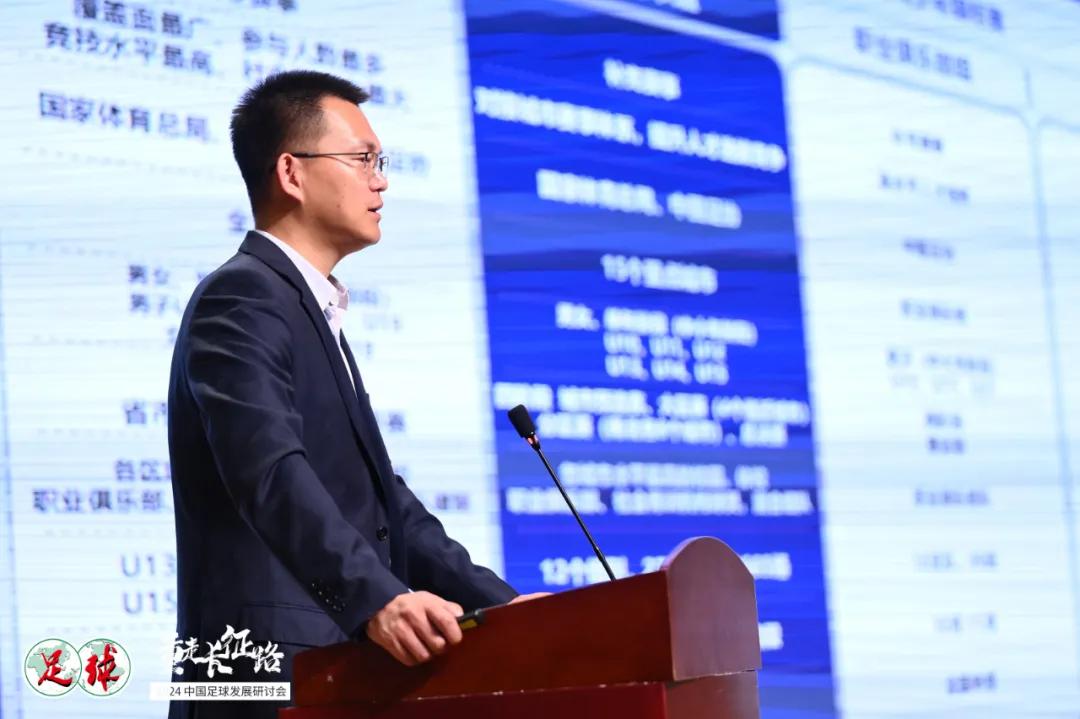

Cheng Xu, head of the Youth Department of the Chinese Football Association (National Football Development Key City Office), spoke at the China Football Development Seminar, citing Zhang Depei, the first Chinese Grand Slam star in men's tennis, as an example, emphasizing the importance of coaching, court and competition to the road of individual growth. Among these three factors, the biggest shortcoming in the construction of key cities is grassroots coaching. France has a football population of 2 million and 300,000 licensed coaches, most of whom are engaged in youth football training. The main bottleneck of Chinese youth football for a long time is the lack of high-level coaches, and even the number of coaches cannot meet the standard.
Like young players, the training system of football professionals in key cities should also be a pyramid system with synchronous development channels. It is not only the grassroots youth coaches who are most urgently needed in youth football, but also the lecturer talent group responsible for teaching the knowledge of the youth training system, scouts who investigate and discover youth talents, directors who coordinate the development of youth training, and professionals in rehabilitation, nutrition, psychology and big data analysis. The cultivation of these football professionals must also rely on the campus football in key cities, the integration of sports and education, and the framework of youth training centers at all levels, coupled with a sound competition system, in order to attract more football professionals who are interested in it.
Compared with the campus football network that has been established relying on the resources of schools in key cities, the youth football framework in key cities is more urgent to cultivate youth coaches and other football professionals with a sufficient base and high quality. As of September 2022, there are 1,036 B-level and above coaches, 107 D-level and above coaches and instructors, and 6,831 referees at level 3 and above registered in 16 key cities for football development. On average, there are less than 65 registered coaches at level B and above in each key city, and less than 7 coaches and lecturers at level D and above, which is far from meeting the requirements of youth coaches and teachers in the youth football training system in key cities. The ratio of grassroots youth coaches to young players in key cities is 1:26, while the ratio of coaches to football population in developed countries is basically below 1:10, and the gap is very obvious.
All in all, the core of the strategic project of building a key city for football development is still from the government, the physical education system to the grassroots community, and the families of young players can be encouraged and promoted to be able to make continuous progress in the field of football while also receiving perfect school education under the support of policies and systems. This requires the whole society to form a joint force to provide all-round support, and to work for a long time in order to achieve success.
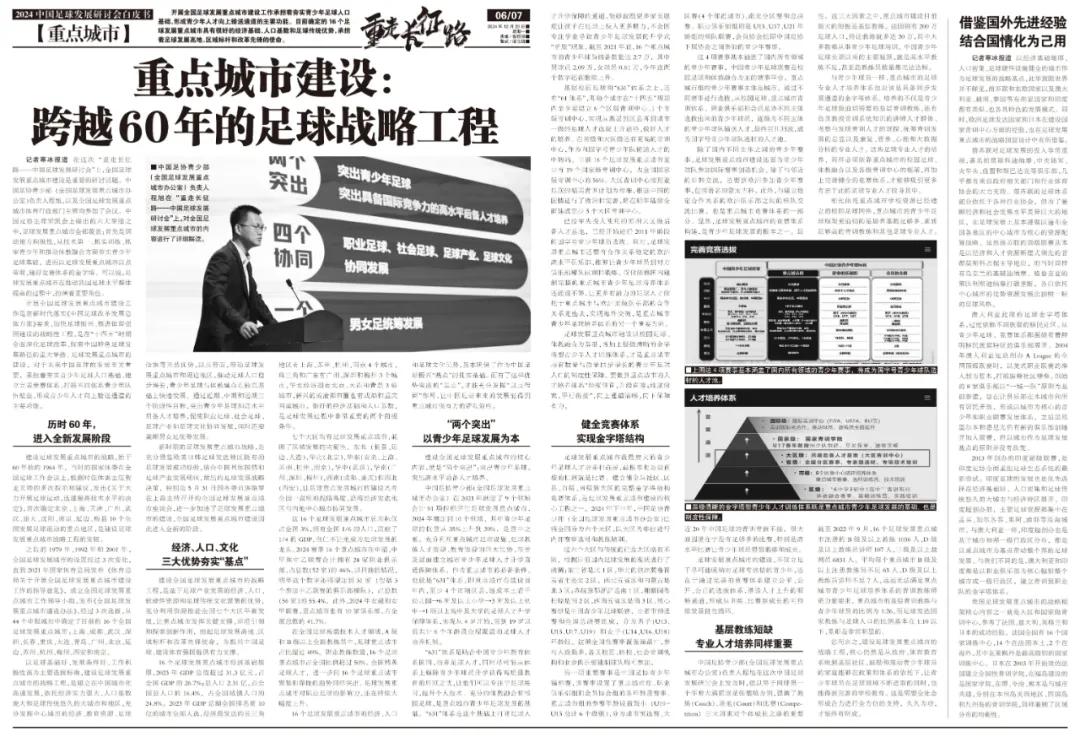


Wonderfulshortvideo
User PlaymakerHub has posted a video.








 Links
Links
 Contact
Contact
 App
App


